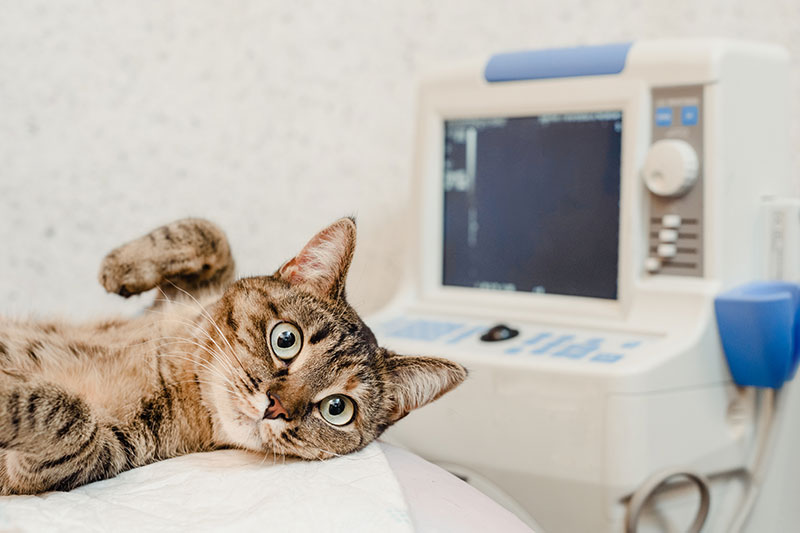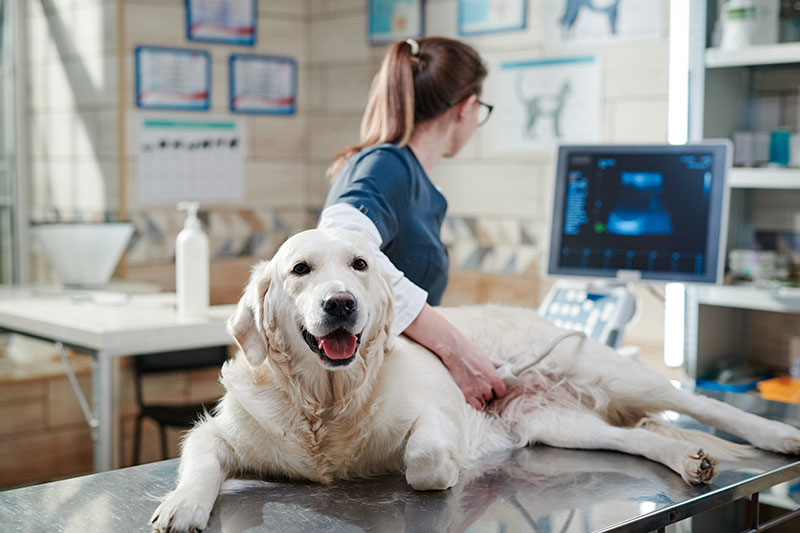Ultrasound

Ultrasound
Veterinarians rely heavily on diagnostic tools such as laboratory tests and diagnostic imaging to determine the underlying cause of a pet’s illness or the extent of an injury. At Veterinary Emergency Triage & Surgery, our emergency veterinarians have a variety of diagnostic tools at the ready and available in-house, including veterinary ultrasound, to aid with diagnosis when your pet needs treatment right away.
What Is Ultrasound?
Ultrasound, also called a sonogram, is a diagnostic imaging tool that uses extremely high-pitched sound waves to produce moving, real-time images of a patient’s internal structures. An ultrasound wand passes over the patient’s body, emitting sound waves that then permeate the patient’s tissues and bounce back. These reflected sound waves are then recorded and translated by a computer to produce the ultrasound image.


What to Expect During an Ultrasound
Ultrasound is non-invasive and pain-free. Ultrasound actually produces a slightly warming sensation which actually helps to relax most pets. As a result, ultrasounds can often be performed while pets are awake. Sometimes, however, depending on the pet’s demeanor, condition, and individual situation, anesthesia might be required in order to obtain a clear image without the pet moving around.
Before performing an ultrasound, our veterinary team will shave a small patch of fur above the targeted imaging site. This creates a smooth surface where the ultrasound wand can glide smoothly and produce a clear, unobstructed image. We then apply a small amount of gel to your pet’s skin which enables better contact between the ultrasound wand and your pet’s body.
We then gather all the necessary data and images during the ultrasound and our veterinarian reviews the images to determine a diagnosis.
How We Use Ultrasound at Veterinary Emergency Triage & Surgery
Since ultrasounds allow us to view internal structures in real-time, we can use them not only to evaluate the placement, size, and shape of a patient’s organs, joints, and bones but also their function.
As a result, there are countless applications for ultrasound exams in veterinary medicine. In emergency situations, we most frequently use ultrasound to diagnose illnesses, determine the extent of injuries, and assist with certain surgical procedures.


In-House Diagnostics for Fast Results and Immediate Treatment
At Veterinary Emergency Triage & Surgery in Lakeland, we understand that emergency and urgent veterinary situations require immediate attention and do not have the time to wait for outside diagnostic results. That’s why we have comprehensive diagnostic capabilities available in-house for use when our patients need them most.
To learn more about ultrasound or your pet’s test results, we welcome you to contact us today.


